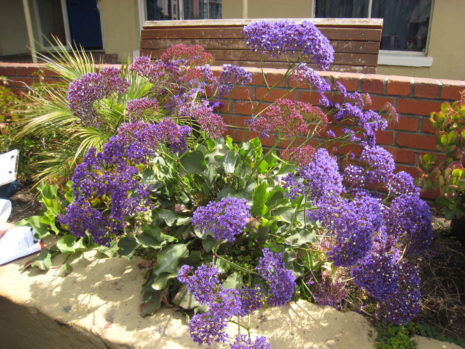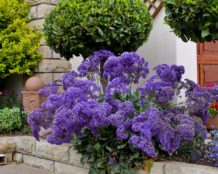Limonium, often referred to by the Turkic word "Kermek" or also popularly known as the immortelle, belongs to the Piglet family and is characterized by excellent vitality. The plant is unpretentious and has excellent immunity to diseases and pests, for which it has become widespread among gardeners.
Material Content:
Description of species and varieties
The genus of perennial herbaceous or semi-shrub plants with basal, rosette leaf blades in the wild is represented by 350 species. Depending on the variety, the height of limonium can vary from 30 to 90 cm, and corymbose or panicled inflorescences, consisting of small flowers, can be painted in pink, purple, salmon, purple and other colors.
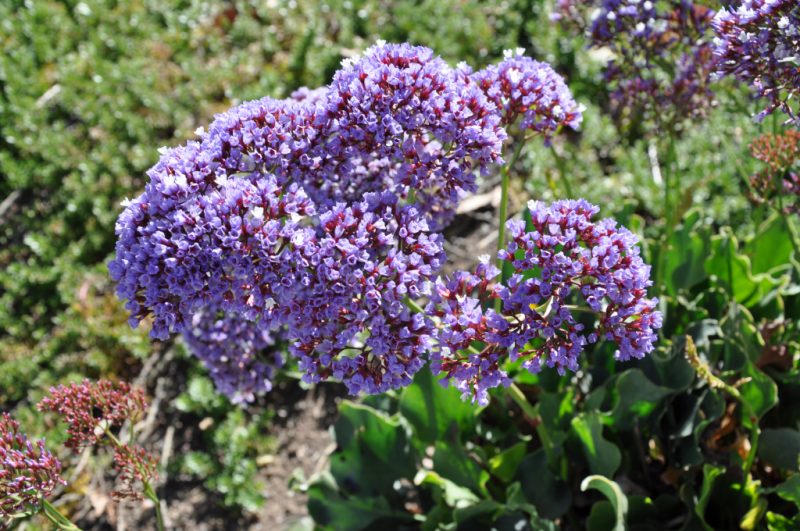
Among the most popular species cultivated in gardens, stand out:
- Suvorov's limonium is a pink representative of the genus with elongated inflorescences in the form of an ear and the height of grassy shoots up to 60 cm.
- Limonium Gmelin is a perennial up to half a meter high with good winter hardiness and violet-blue corymbose inflorescences crowning branched peduncles.
- Peres limonium - a species native to the Canary Islands, stands out with beautiful large inflorescences of purple color, which are used both to create fresh flower bouquets and dry ones.
- Kermek broadleaf - medium-sized species with loose inflorescences in the form of brooms. The best varieties: limonium dark blue with a violet hue “Violetta”, lavender representative “Blue Cloud”.
- Kermek Bondwelli is a tall species from North Africa with yellow and white flowers.
- Chinese Limonium is a fairly young species in a culture whose herbaceous plants are grown as annuals in the midland. When flowering, yellow flowers with cream or white bracts are noted. The best varieties: creamy white “Elegant” and “Candy”.
- Notched lemonium is the most common variety in the culture cultivated in garden floriculture since 1600. On average, the height of the shoots with basal pinnate leaf blades is 60 cm. Depending on the cultivar series, the color of the inflorescences that form on the erect and in the upper part of the branched peduncles has a huge color palette from purple to pink. Popular representatives: Mikst Hybridz, Shamo, Fortress, Lavandel, Iceberg.
Growing limonium from seeds
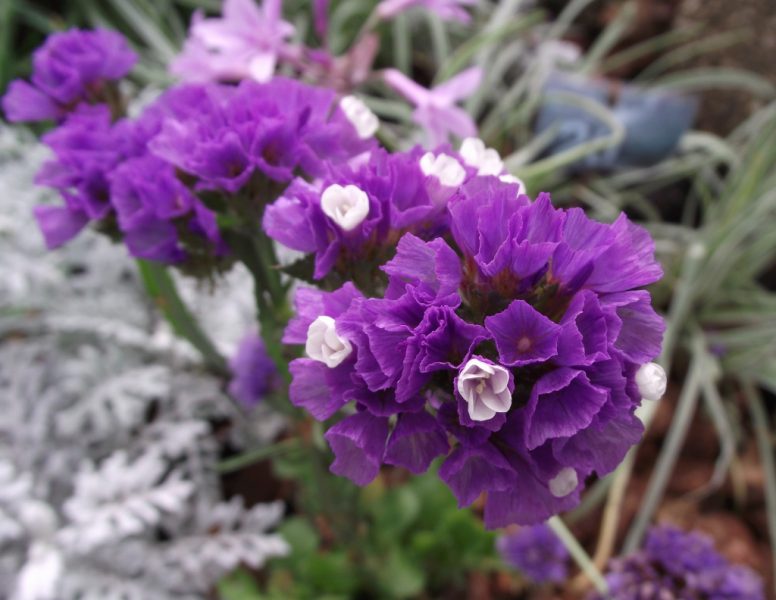
Growing from the seeds of an ornamental plant limonium in a temperate climate is carried out in the seedling method.
Sowing seeds
Since the seeds of Lemonium are enclosed in a dense shell, before sowing, they should be scarified by walking with sandpaper and standing for several hours in a growth stimulator. Seeds are sown at the end of winter and the beginning of spring in peat containers with loose and moist soil to a depth of 5 mm. After sowing, the containers are placed under glass where they are kept at a temperature of 16-21 ° C. To accelerate germination, you can resort to lower heating.
Seedling Care
When shoots appear in 2-3 weeks, the soil under the seedlings must be regularly moistened and loosened. If the seeds were sown in a container or box, then in stage 2 of these leaves the plants dive. Limonium has a rooted root system that develops rapidly, so the dive procedure should be carried out no later than the indicated development phase. In mid-spring, harden seedlings, gradually bring plants to fresh air.
Rules for landing in open ground
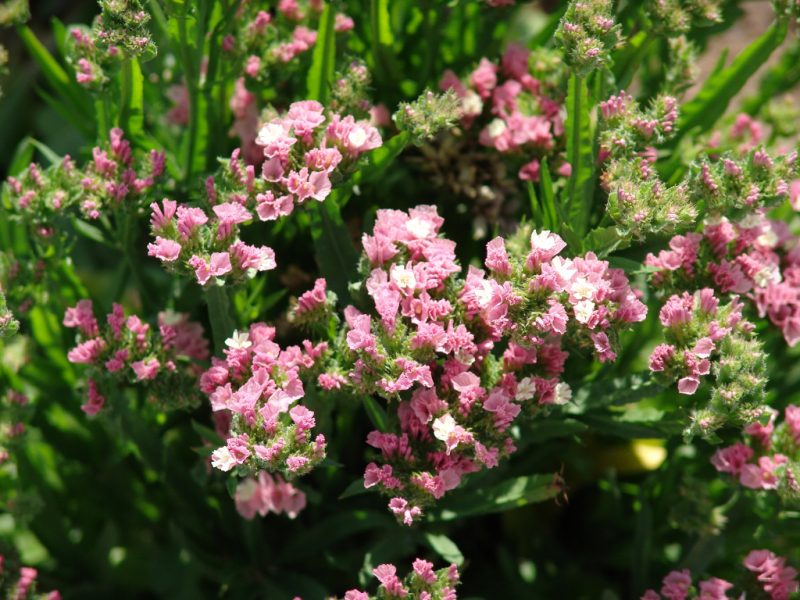
In order for the undemanding limonium to take root in the garden, it is necessary to plant the culture in open ground subject to certain rules.
Choosing a place and soil
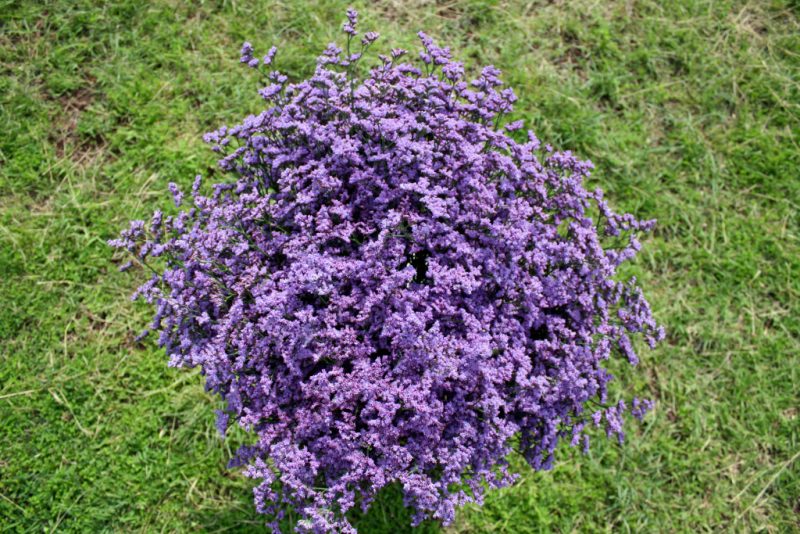
For kermek sunny spots are selectedthat may be exposed to the wind. Despite the fact that the culture is undemanding to the soil composition, preference should be given to drained, loamy soils with a loose structure and neutral reaction.
Landing technology
Planting material is planted in open ground at the beginning of summer, when the threat of freezing frost finally passes, according to the following rules:
- Wells with depth and diameter corresponding to the root system of plants with an earthen lump are prepared at the selected site.
- The distance between the recesses is maintained within 25-40 cm, depending on the type and variety.
- A glass is carefully cut so as not to damage the integrity of the coma, which sinks into the hole.
- Planted bushes are watered with salted solution at the rate of 15 g of salt per bucket of water.
How to care for limonium
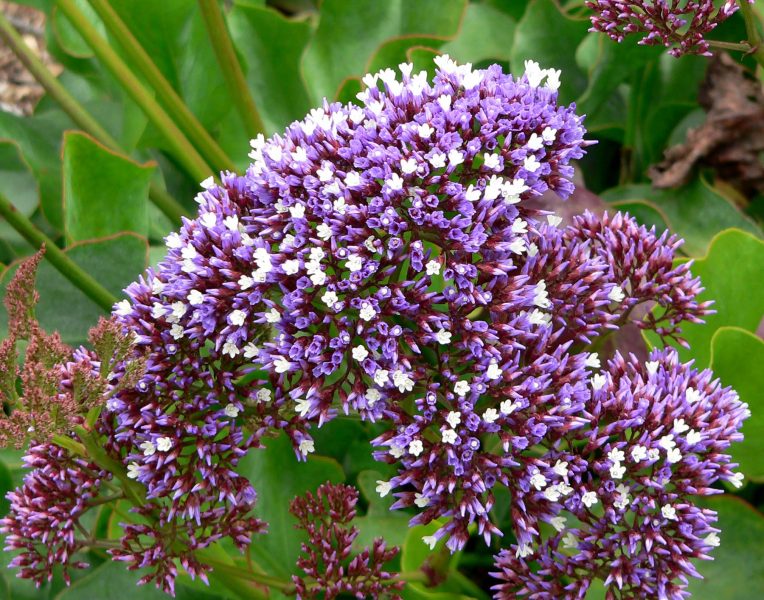
Lemonium flower is so unpretentious that it grows beautifully with almost no outside interference.
Watering
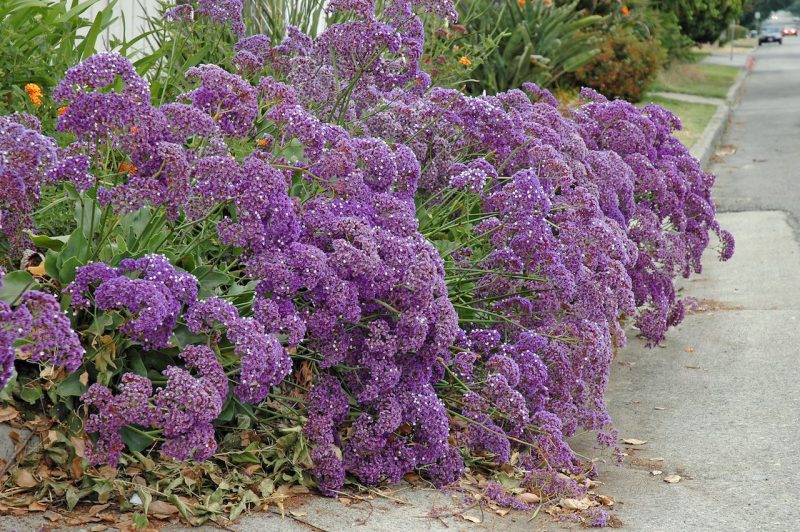
Kermek needs double watering only in dry summer conditions, when the leaves of the plant begin to lose turgor. With prolonged soil drought, moistening is carried out in the evening directly under the root. Water for the first irrigation is used settled and salted at the rate of 30 g of salt per 10 l of water.
Soil treatment

To ensure good aeration of the soil, the trunk circle is sometimes loosened with the simultaneous removal of weeds.
Top dressing

If seedlings were planted on fertile soil, then limonium does not need additional fertilizing. However, with a lean fertile layer, it is desirable to enrich the soil every month in the summer with the help of complex mineral fertilizers.
Kermek in winter
There are types and varieties that are characterized by winter hardiness and the ability to withstand temperatures as low as -30 ° C.
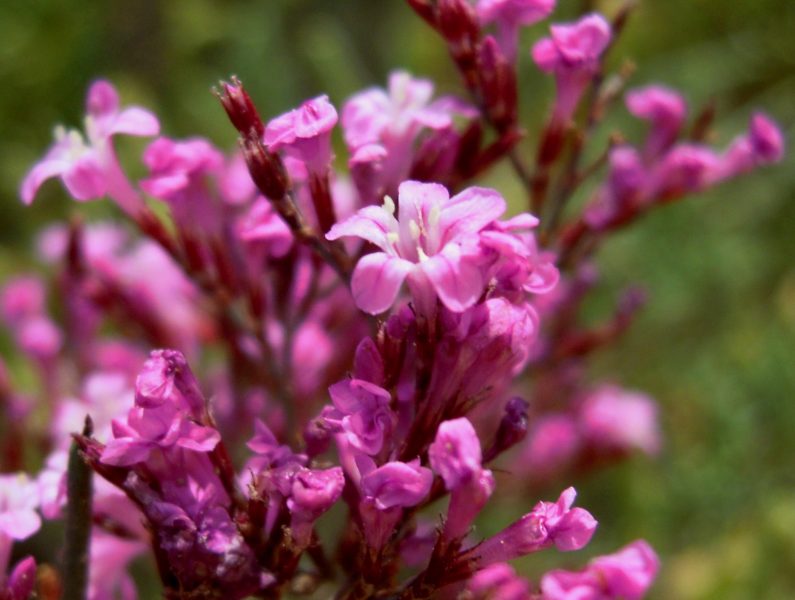
In order for the plants to fully realize their potential, it is necessary to properly prepare them for winter:
- After the winter-hardy representatives of limonium begin to turn yellow and dry out, the shoots are shortened to ground level.
- Plantings are covered with a layer of mulch from straw, peat or pine needles, which is covered with non-woven covering material that can protect plants from spring, melt water.
Typical diseases and pests. Prevention Methods
Limonium, possessing excellent immunity, is very rarely affected by harmful organisms.
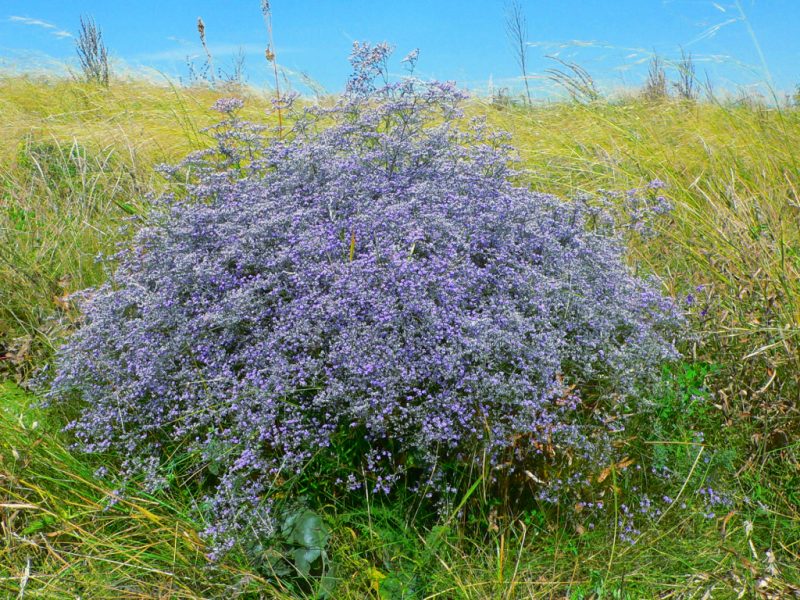
However, under adverse weather conditions (rainy summers) and improper care on the plant, the development of such diseases and pests can be noted:
- botritis - rot characteristic of vegetable crops, to cope with which will help to timely spraying the affected bushes with fungicide;
- oidium - when white mold appears on the shoots, the culture should be treated with a sulfur-containing preparation;
- aphid is a sucking pest, which can be eliminated by spraying with an insecticidal solution.
As a preventive measure to protect the plant, it is recommended that all agrotechnical requirements that strengthen the immune system of limonium be observed and that crop residues be removed after pruning. In case of rainy weather, it is also worthwhile to carry out preventive treatment of the plant with a fungicidal solution.
Breeding methods
In addition to the seed method of reproduction, perennial Kermek can be bred and rejuvenated with cuttings that are harvested in the spring.
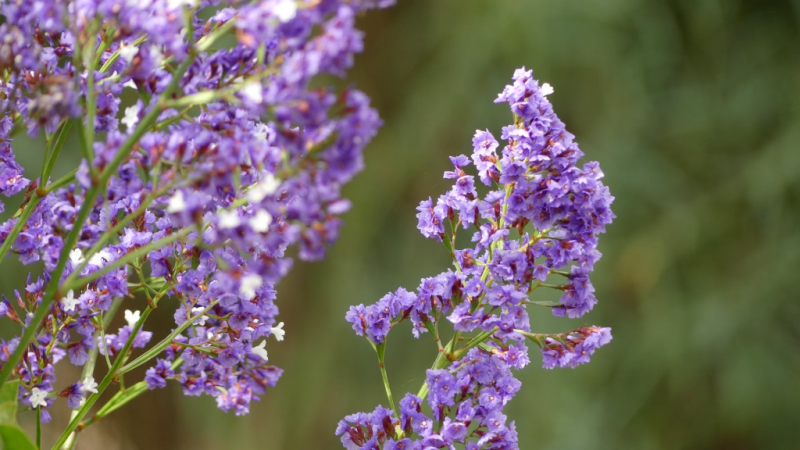
At this reception:
- The bush is dug up and the intact parts of the root about 10 cm long and pencil-thick are selected.
- When pruning the roots, it is not allowed to remove more than удаление of the root mass.
- The mother plant returns to the ground, where it is dug in and watered abundantly.
- Side processes are removed from the cuttings, after which the planting material is buried in the soil mixture of sand and peat by 2 cm.
- In the rooting process, which occurs at temperatures between 15-17 ° C, plantings are not watered.
- When green shoots appear, new plants are transplanted to a permanent place of growth.
Limonium Landscaping
Kermek, with the right cut, not losing color of dry flowers throughout the year, has become widespread not only among florists who use it in the preparation of flower bouquets.
Due to the variety of varieties with different stature and color, the plant is loved by many landscape designers:
- Limonium is used to create group plantings near fences and various structures from the sunny sides.
- With the help of undersized varieties, garden paths and flower beds are framed.
- In mixborders, limonium with purple inflorescences is perfectly shaded by yellow-orange calendula and marigolds.
- Exquisitely looks kermek in the flower garden next to the snow-white gypsophila.
Thus, with little effort, the gardener will be able to become the owner of a beautiful inhabitant of the garden, decorating the site with bright inflorescences for a long period.


